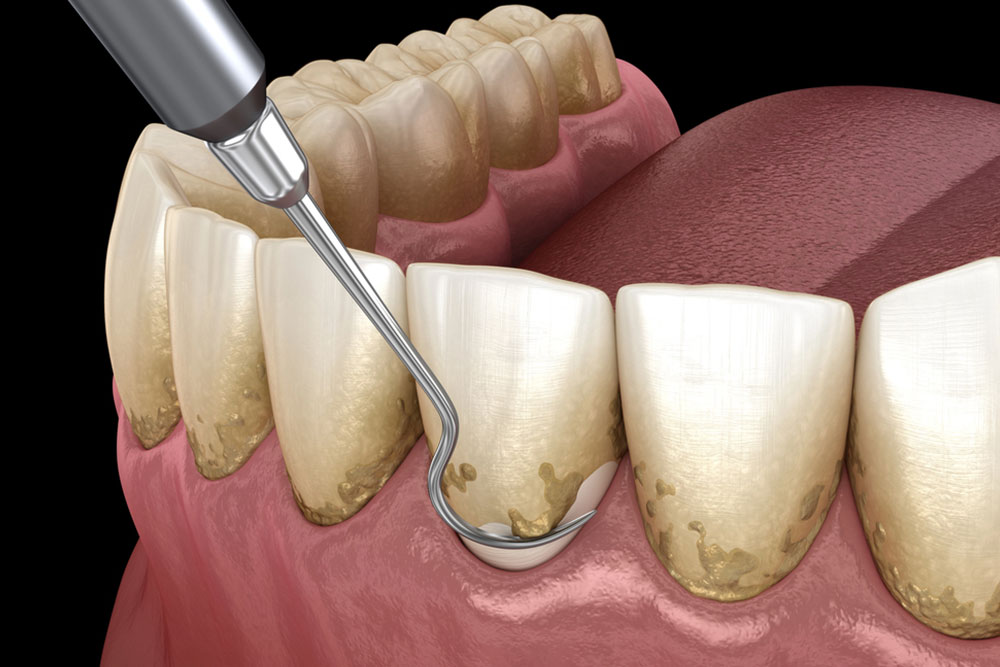
Gum disease is a common issue that, if left untreated, can lead to serious oral health problems. One of the most effective treatments for gum disease is scaling and root planing. But when is scaling and root planing needed, and what does the procedure involve?
In this post, we’ll explore what scaling and root planing is, why it’s necessary, and how it can help restore your oral health.
What Is Scaling and Root Planing?
Scaling and root planing is a thorough cleaning procedure designed to address gum disease. It is typically recommended when plaque and tartar have accumulated below the gum line, leading to infection or swelling.
Scaling involves removing plaque and tartar from the surfaces of the teeth and beneath the gums, while root planing smooths the tooth roots to promote the reattachment of the gums.
The main goal of this procedure is to remove bacteria, reduce inflammation, and help your gums heal. It’s often the first line of defense against gum disease, especially when the condition is in its early to moderate stages.
Signs You May Need Scaling and Root Planing
If you experience swollen or bleeding gums when brushing or flossing, you may need scaling and root planing. Other signs that suggest you might need this procedure include persistent bad breath, loose teeth, or tooth sensitivity. These symptoms often indicate that plaque and tartar have accumulated below the gum line, leading to gum disease.
If you notice any of these issues, it’s important to visit a periodontist for an evaluation. Early treatment with scaling and root planing can help prevent more severe complications like tooth loss or bone deterioration.
How Is the Scaling and Root Planing Procedure Done?
The scaling and root planing procedure is typically done under local anesthesia to ensure your comfort. Your dentist will first take a look at your gums and may also take X-rays to determine the extent of the gum disease. Then, they will use special tools to remove plaque and tartar from your teeth and beneath your gums.
Once the teeth are cleaned, your dentist will smooth the roots of your teeth. This step, called root planing, helps remove bacteria and rough spots, promoting healthy gum tissue growth. The procedure may take one or two visits, depending on how severe the gum disease is.
After the treatment, you may experience some discomfort or swelling, but these symptoms should subside in a few days. Your dentist will give you specific aftercare instructions to promote healing.
The Benefits of Scaling and Root Planing
The main benefit of scaling and root planing is that it helps treat and manage gum disease. By removing harmful plaque and tartar, this procedure reduces gum inflammation, restores gum health, and prevents tooth and bone loss. It helps the gums reattach to the teeth, making it easier for you to maintain good oral hygiene.
Additionally, it can improve your overall oral health by removing bacteria and toxins from your mouth, which helps prevent future issues.
When Should You Schedule Scaling and Root Planing?
If you notice symptoms like bleeding gums or bad breath, it’s a good time to schedule a dental visit. Early intervention with scaling and root planing can help stop gum disease from advancing. Taking care of your gums now can save you from needing more complex treatments in the future.
Contact Grand Family Dentistry for Scaling and Root Planing
At Grand Family Dentistry, we understand the importance of keeping your gums and teeth healthy. If you’re experiencing signs of gum disease or need scaling and root planing in Mandeville, LA, we can help. Our team is skilled in treating gum disease and helping you achieve long-term oral health.
Contact us today to schedule a consultation or learn more about how scaling and root planing can restore your gum health.
